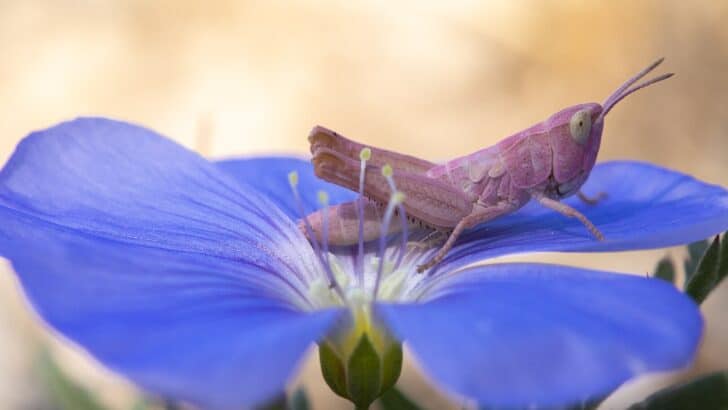
A Rare Pink Grasshopper Captures the Attention of a Young Observer
At first glance, it appeared to be nothing more than a toy. That was the initial thought of 13-year-old Mya Callahan when she spotted a bright pink grasshopper hopping through her family’s backyard in Savannah, Georgia. However, as the insect moved again, she realized that what she had seen was not a toy at all — it was a real, living creature, and one that was incredibly rare.
“I’d never seen anything like it,” she said. “I just grabbed my phone and started filming.” What followed was a video that quickly gained attention online, sparking interest from both the public and wildlife experts.
Local wildlife professionals later confirmed that Mya had stumbled upon a pink morph of the common grasshopper, a result of a rare genetic mutation known as erythrism. This condition causes an unusual reddish or pink pigmentation in an animal's exoskeleton, making it stand out dramatically from its surroundings.
Understanding the Rarity of the Pink Grasshopper
Erythrism is a genetic trait that is extremely uncommon in insects, particularly in grasshoppers. Scientists estimate that only one in 500 grasshoppers exhibits this characteristic. Unlike their green or brown counterparts, which can blend into their environment, pink grasshoppers are highly visible, making them easy targets for predators such as birds and lizards.
“They’re like walking neon signs in the grass,” explained Dr. Shelby Lang, an entomologist at the University of Georgia. “Which is why we seldom see them reach adulthood in the wild.”
This makes the discovery of a pink grasshopper even more remarkable. It is a rare glimpse into the genetic diversity that exists within the natural world, highlighting how nature can produce unexpected and striking variations.
A Backyard Lesson in Biodiversity
Since the discovery, the Callahan family has transformed their backyard into a small observation area, hoping that the pink grasshopper will remain in the vicinity for a while. With guidance from local conservationists, they have decided to let the insect live undisturbed in its natural habitat.
Dr. Lang emphasized that such encounters serve as a reminder that amazing discoveries can happen close to home. “This isn’t a lab or a jungle — it’s a backyard. Nature doesn’t care where you are.”
What to Do If You Encounter a Rare Insect
If you come across an unusually colored insect, here are some steps to take:
- Observe from a distance and avoid handling it unless absolutely necessary.
- Take clear photos and document the time and location of your sighting.
- Report your findings to a local extension office or wildlife agency.
- Avoid relocating the insect, as this could harm its survival or disrupt its habitat.
- Let it live freely in the wild, even if it is startlingly colorful.
These actions help ensure that the insect remains safe and that valuable data can be collected for scientific research.
The Broader Significance of the Discovery
The pink grasshopper found in Savannah is more than just a curiosity; it serves as a powerful example of how rare genetic traits can inspire awe, scientific interest, and conservation efforts. Whether you're deep in a forest or simply in your own backyard, nature has a way of reminding us that there is always something new to discover, provided we are attentive and respectful.
This encounter highlights the importance of biodiversity and the role that every individual plays in maintaining the balance of ecosystems. It also encourages people to appreciate the wonders of the natural world, no matter how small or seemingly insignificant they may appear.
Post a Comment